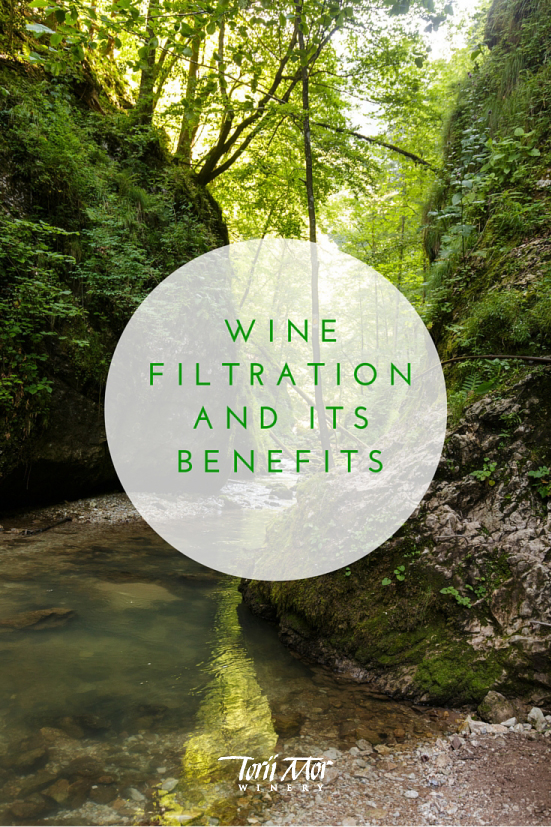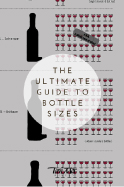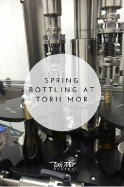Wine Filtration and Its Benefits

If you take a drive through wine country in the middle of winter, it may seem as if all is quiet and at rest during the colder months of the year. The vines are bare and pruned and we have a few more months until spring makes the vines full and lush once again.
However, if you step inside the wineries dotting our hillsides, you'll find the hustle and bustle of the finer points of winemaking being performed day to day. This week at Torii Mor, Jacques is filtering the wines.
A sometimes controversial practice, filtering wines is, at its core, a way to help clarify the wine, to remove any leftover yeast and bacteria and to remove any leftover solids in the wine (mostly tartrates in white wines). This helps prevent the wine from going bad, helps the wine to mature faster, and improves the look of the wine in the glass. Because we ship the wine all over the country and abroad, we filter our wines to help make them more stable.
Filtration involves wine being pumped from one tank to another through various filtering methods. We use two different filtration methods here at Torii Mor. The first is diatomaceous earth filtration, a powder that is mixed with the wine, adding a bit more and a bit more powder as the wine flows through the filter, until the powder cakes the filter. This is a very fast, efficient method of clarifying wine.
The tangle of pumps and tubes of wine flowing through the filter
The second method is pad filtration, where the wine gets filtered through a cellulose pad. There are different grades of pads, each filtering out particles of different sizes. Larger grades allow larger particles to remain in the wine. The wine has to be fairly clean when it goes through pad filtration. White wines get filtered with pads that have a smaller grade so they are filtered more vigorously, since they are in the bottle for a shorter amount of time while red wines are filtered with a higher grade to allow a bit of tannin and other particles to stay influencing the wine.
Jacques puts it best: "Filtration is not a bad thing, it is just a tool you have to use judiciously...not everything has to go through the same filter...we allow some yeast and some bacteria to remain in the wine so the Pinot Noir will age properly." Lucky for us, we have a winemaker who knows the best way to use the tools he's given.
Let us know if you liked this post and if you want to see more like it!
Cheers!
Alexis Truitt
Social Media and Marketing Assistant



